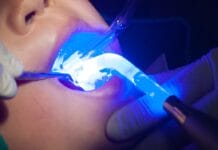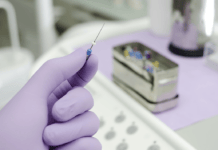In the United States, dentists prescribe opioids more frequently and in higher quantities than their counterparts in other countries. This practice has been associated with significant negative consequences, such as opioid misuse, prolonged use, and the illegal distribution of these drugs.1
A study published in the Journal of the American Dental Association investigated the trajectory of opioid prescribing among dentists from 2015 through 2019.1
The Study
The study used IQVIA Longitudinal Prescription Data (LRx) from 2015 to 2019, with 2015 serving as the baseline and 2019 marking the study’s conclusion. The LRx database includes around 92% of all outpatient prescriptions filled in the United States, covering insurance and cash transactions.1
The prescriber data comprised various dental provider types, such as general dentists, specialists (including pediatric dentists, endodontists, orthodontists, periodontists, and prosthodontists), and oral and maxillofacial surgeons (OMFS). For this study, all specialties and general dentists are collectively referred to as “dentists.”1
Consistent with previous studies, included were dentists who actively prescribed medications, defined as those issuing 20 or more prescriptions of any kind within a calendar year in the LRx.1
Opioid prescriptions were identified using National Drug Codes. As in prior research, topical opioids, opioid formulations solely for cough suppression (i.e., promethazine and codeine), and buprenorphine-containing products used for opioid use disorder rather than pain management (i.e., buprenorphine and naloxone) were excluded.1
Additionally, prescriptions lacking dentist, patient, or prescription details, as well as those with an invalid or unusually high supply duration or quantity dispensed (often data entry errors) were omitted. Dentists practicing outside the 50 states and the District of Columbia were excluded, as were prescriptions written by dental hygienists or technicians (i.e., fluoride, chlorhexidine, and other topical medications).1
Results
From 2015 through 2019, there were 319,384,935 prescriptions by 199,145 unique dentists, of which 70,978,575 (22.2%) were for opioids. Over the five years examined, the number of opioids prescribed by dentists decreased by 34.4% (16.9 million in 2015 and 10.9 million in 2019).1
At baseline (2015), 95% of prescribers of opioids were general dentists, 1.6% were specialists, and 3.4% were OMFSs. Overall, 4.2% of opioid prescriptions per provider were 50 or more morphine milligrams equivalent (MME) per day, and 28.6% were over three days’ supply, which fell into the high-risk category.1
The study identified distinct groups of dentists based on their opioid prescribing patterns. One group consisted of dentists who prescribed opioids very rarely (less than 1% of all opioids during the study period). Another small group (3.4%) stood out for having the highest opioid prescribing rates at the start and continued to prescribe at these elevated levels over time. Additionally, there was a group of dentists who reduced their opioid prescriptions over the course of the study.1
The high-prescribing group also issued a larger proportion of opioid prescriptions that were considered high-risk (≥50 MME per day). This is particularly concerning, as the Centers for Disease Control and Prevention (CDC) reports that taking opioids at a dosage of 50 or more MME per day doubles the risk of overdose-related death.1
Conclusion
Dentists face several obstacles when it comes to reducing opioid prescriptions. These challenges include managing patients who expect to receive opioids, concerns about losing business, treating patients with comorbidities, prescribing “just in case,” and addressing pain in patients with substance use disorders.1
Successful strategies for reducing opioid prescriptions in dentistry have included continuing education (CE) programs, prescription drug monitoring programs (PDMPs), and setting default tablet quantities in electronic health records. However, not all state dental boards mandate CE on opioids for licensure and renewal, there is inconsistency in the use of PDMPs, and no consensus exists on the recommended quantity of opioids for dental pain.1
Additionally, there have been no national guidelines for prescribing opioids for dental pain, which may explain why some dentists have not adjusted their prescribing habits. The recent guidelines from the American Dental Association on dental pain management could be pivotal in limiting opioid use to essential cases and might help shift the standard toward using NSAIDs for managing dental pain.1
The American Dental Association’s guidelines on acute dental pain management for adolescents, adults, and older adults were published in February 2024 and can be accessed here.
Before you leave, check out the Today’s RDH self-study CE courses. All courses are peer-reviewed and non-sponsored to focus solely on high-quality education. Click here now.
Listen to the Today’s RDH Dental Hygiene Podcast Below:
Reference
1. Khouja, T., Shah, N.H., Suda, K.J., Polk, D.E. Trajectories of Opioid Prescribing by General Dentists, Specialists, and Oral and Maxillofacial Surgeons in the United States, 2015-2019. J Am Dent Assoc. 2024; 155(1): 7-16.e7. https://www.ncbi.nlm.nih.gov/pmc/articles/PMC10870999/










